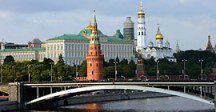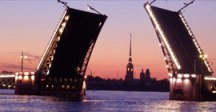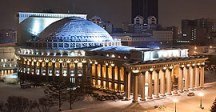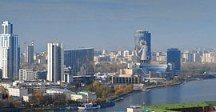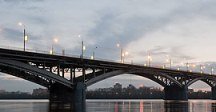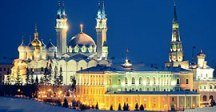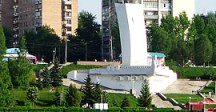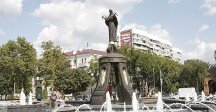Map of Tyumen
Detailed interactive map of Tyumen. Map of Tyumen with streets and numbers of houses. Satellite map of Tyumen with sights of the city.
The change between the satellite map of Tyumen and the schematic one is made in the lower left corner of the interactive map.
Tyumen
Population of Tyumen: 816,800 people (2021)
Date of foundation Tyumen: July 29, 1586.
Tyumen phone code: +7 3452
Tyumen city car code: 72
Postal code of the city of Tyumen: 625000
The airport ofTyumen: Tyumen (Roshchino) (TJM)
Tyumen is the capital of the Tyumen region of the Russian Federation (Ural District). The city is located in the southern part of the West Siberian Plain (in the south of the Kondinsky lowland) on the Tura River, 1,725 km east of the capital of Russia.
The history of Tyumen
Tyumen is the first and oldest Russian city formed on the territory of Siberia. The settlement was founded in 1586 on the site of an ancient settlement at the mouth of the Tyumenka River as an outpost for the development of Siberia and the Far East.
The name was taken from the Turkic "Tyumen", which meant "lowland, lower reaches". Since the beginning of the 17th century, the city has become a major transport interchange connecting Russian cities with China. The city is located at the crossroads of trade routes between Europe and Asia, and therefore has strategic importance.
Tyumen of the early 18th century is a large transit city with developed trade and crafts. There were famous craftsmen who specialized in blacksmithing, soap making, and wood products throughout Siberia. The city has achieved special popularity thanks to the art of leather dressing. The products were sold not only in our country, but also abroad.
The economic importance of Tyumen increased with the development of shipping and the construction of the railway in 1885. The first steamship launched in 1838 and the opening of the Tyumen - Yekaterinburg railway line in 1885 made the city an important economic center of Russia.
A new page in the history of Tyumen is the discovery and development of oil and gas fields in the 1960s and 1970s.
Tyumen city
Currently, Tyumen is the cultural and economic center of Siberia and the unofficial "oil and gas capital" of Russia. In addition, it is a major economic, cultural, scientific and sports center of Russia. Over the past decades, Tyumen has been leading in various ratings.
The city is becoming the best metropolis, leading in terms of the quality of life of the population and infrastructure development, and is among the top three cities in terms of fertility. Tyumen is not a popular tourist destination, but those who come here have something to see.
What to see in Tyumen
As a rule, sightseeing in Tyumen always begins with the embankment of the Tura River. Be sure to visit the Lovers' Pedestrian Bridge. One of the oldest sights of Tyumen is the Holy Trinity Monastery, which was founded in 1616 and was called the Transfiguration of the Savior until 1715.
Another attraction of Tyumen is the restaurant-museum “Chum". Here you can taste local cuisine, as this restaurant is a unique catering establishment with dishes of the northern peoples.
In Tyumen, the sights are not only architectural, but also natural. There are thermal springs in which you can swim all year round, because the water temperature in them does not fall below +36 C.
One of the most interesting historical monuments of the city is the Kolokolnikov Manor Museum. This is the only merchant estate in Tyumen that has survived to the present day. The beautiful house was built in the early 19th century. It is famous for the fact that Emperor Alexander II repeatedly stayed here when he visited Tyumen. The city has several wonderful gardens and parks. The most beautiful of them is the Alexander Garden.
Tyumen districts
There are 4 administrative districts in Tyumen: Kalininsky, Leninsky, Central and Vostochny.
The economy of Tyumen
Economic potential: oil refining, petrochemical and chemical industries, machinery and shipbuilding, electric power industry, woodworking, building materials, light and food industries.
Transport in Tyumen
Tyumen is a major transport hub: highways — R-351 Yekaterinburg—Tyumen (Moskovsky Tract), R-402 Tyumen—Ishim—Omsk (Yalutorovsky tract), R-404 Tyumen—Tobolsk—Khanty-Mansiysk (Tobolsk tract), M-51 Tyumen—Kurgan (Chervishevsky tract) and highway B directions Kamenka, Salairka, Nizhnyaya Tavda, bus station and intercity bus service; airlines – airports "Roshchino" and "Plekhanovo"; railway junction on the Trans-Siberian railway; river port.
Sights of Tyumen
Siberian Cats Square, Monument to Mom, Tyumen State Circus, Country Garden, Znamensky Cathedral, Paratroopers Square, Tyumen Drama Theater, Spasskaya Church, Sports Palace, Komsomolsky Square, Tyumen Puppet Theater, Holy Cross Church, Holy Trinity Monastery, Church of St. Joseph the Betrothed, Nigmatulla Hadji Mosque, Tyumen Synagogue, Temple of Simeon the Godfather, Ascension St. George Church, Seventh-day Adventist Spiritual Center, St. Demetrius Donskoy Church, State Agrarian University of the Northern Urals, Museum of Local Lore, Bridge of Lovers, Monument to N.I. Kuznetsov, Alexander Garden, Nigmatullah Haji Mosque, Unity and Concord Square, Engagement Theater, Museum of Geology, Oil and Gas.
The largest cities in Russia:
2024 © Russia-Karta.ru
